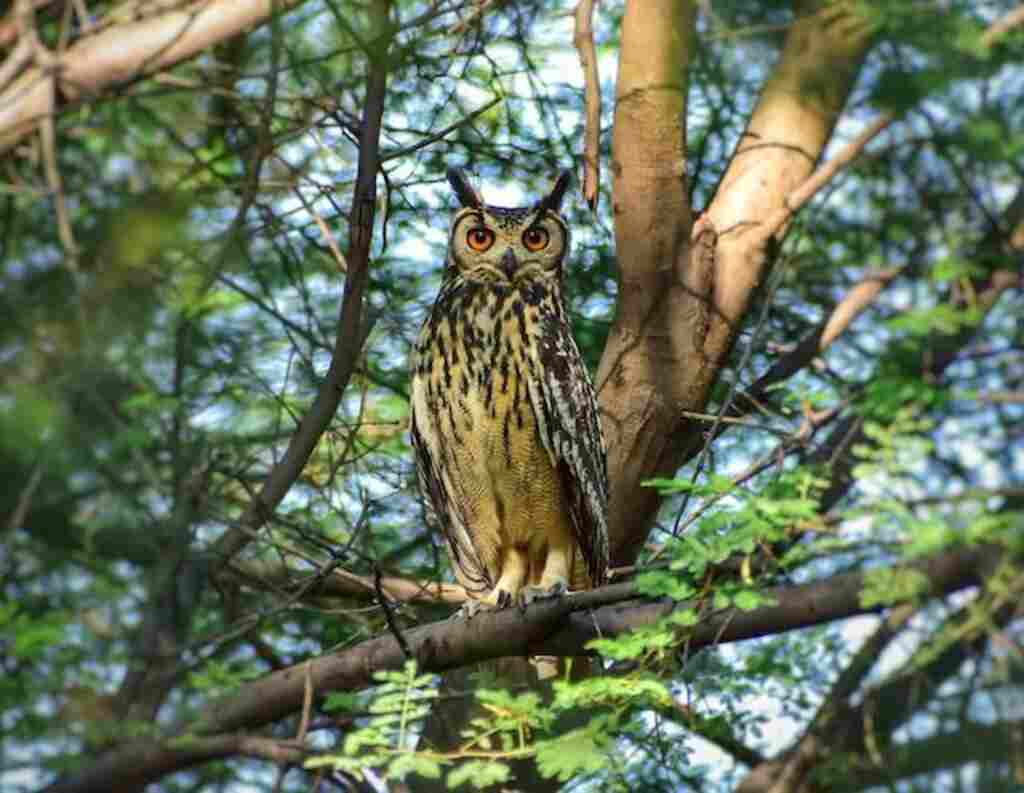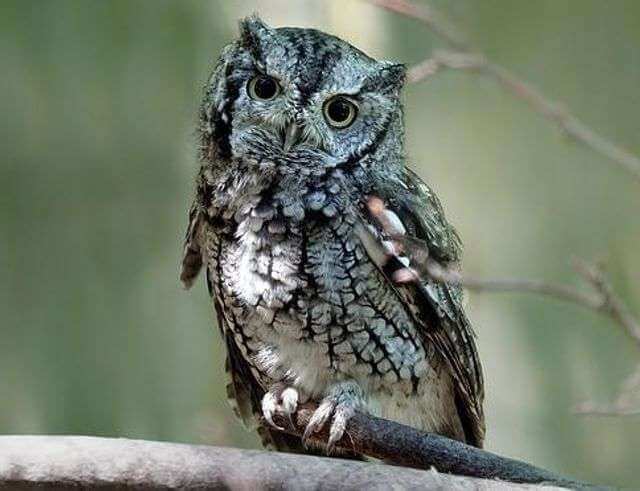Do owls have teeth? It’s a question that may seem silly, but if you’re a fan of these majestic creatures, you’ll know that their appearance can be deceiving.
While they may not have the kind of teeth you’re used to, owls do have some impressive dental adaptations that make them one of the most efficient predators in the animal kingdom.
So, if you want to learn more about how owls hunt, eat, and survive, keep reading!
Table of Contents
- 1 Definition of Owls
- 2 Common Misconceptions About Owls’ Teeth
- 3 Purpose of the Article
- 4 Overview of Owls’ Anatomy
- 5 Do Owls Have Teeth?
- 6 The Mystery Behind Owls’ Teeth
- 7 The Role of Beak in Owl’s Diet
- 8 Owl Adaptations for Hunting Without Teeth
- 9 Summary of the Article
- 10 The Importance of Knowing About Animal Anatomy and Adaptations
- 11 Why We Should Appreciate Owls More
- 12 FAQs: Do Owls Have Teeth?
- 13 Conclusion
- 14 Author
Definition of Owls
Owls belong to the order Strigiformes, which includes around 200 different species. They are nocturnal birds of prey that are found on every continent except Antarctica.
There is a wide range of owl sizes, spanning from the diminutive elf owl that measures only six inches in height to the massive Eurasian eagle-owl that boasts a wingspan of up to six feet.
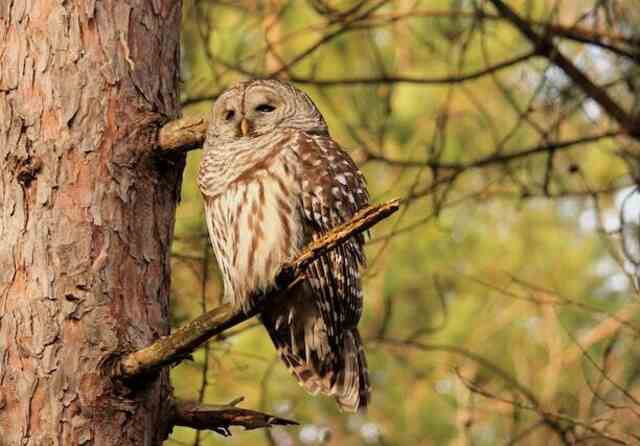
Common Misconceptions About Owls’ Teeth
One common misconception about owls is that they have sharp teeth like those found in carnivorous mammals such as cats and dogs.
This misconception has been perpetuated by popular media such as cartoons and movies, where owls are often portrayed with sharp fangs. However, this is far from the truth.
Another misconception is that all owl species lack teeth entirely.
While it’s true that many owl species do not have visible teeth like humans or other animals do, some species actually do possess tiny serrated projections on their beaks that help them tear apart prey.
Purpose of the Article
The main purpose of this article is to provide accurate information about owls’ dental anatomy and clarify common misconceptions surrounding it.
Additionally, this article will explain how owls use their beaks to catch prey instead of relying on traditional tooth structures.
Through examining these topics, we can gain a deeper appreciation for these unique and mysterious creatures that have fascinated humans for centuries.
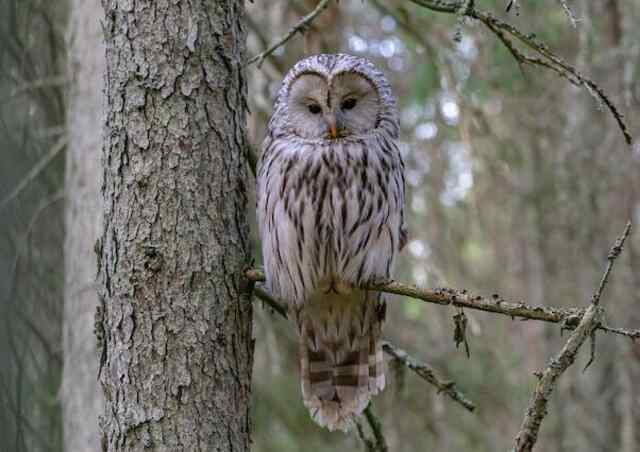
Overview of Owls’ Anatomy
Physical characteristics of owls
Owls are characterized by their large heads, round faces, and forward-facing eyes. They have a flat face and a sharp beak that is used to catch prey. Owls also have distinctive feathers that are designed to help them fly silently through the air.
Their wings are broad and pointed, which allows them to achieve low-speed flight without falling or flapping their wings excessively. Interestingly, the color of an owl’s feathers can be indicative of its habitat.
For example, owls with brown feathers tend to live in wooded areas, while those with white feathers inhabit snow-covered regions. Additionally, the size of an owl can vary greatly depending on its species.
Types of owls
There are over 200 species of owls in the world, with some being more famous than others. Some common types include the Barn Owl, Snowy Owl, Great Horned Owl, and Screech Owl.
Barn Owls are known for their pale colors and heart-shaped faces. They typically live in open fields or farmland areas where they feed on small rodents like mice or voles.
Snowy Owls tend to be larger than other owl species and can weigh up to six pounds. They have yellow eyes that contrast sharply against their white feathers making them one of the most recognizable birds in the world.
Great Horned Owls have distinctive ear tufts that make it look like they’re wearing headphones. They’re known for their impressive hunting skills, as they’re able to take down animals twice their size!
Differences between owl species
While all owls share similar characteristics such as forward-facing eyes and sharp talons used for catching prey, there are distinct differences between each species. For example, some owls prefer different habitats than others, while others have adapted to hunt specific prey.
In addition, some owls are able to rotate their heads a full 270 degrees, while others can only turn their heads 180 degrees. Knowing the differences between owl species is an essential part of understanding their behavior and survival tactics.
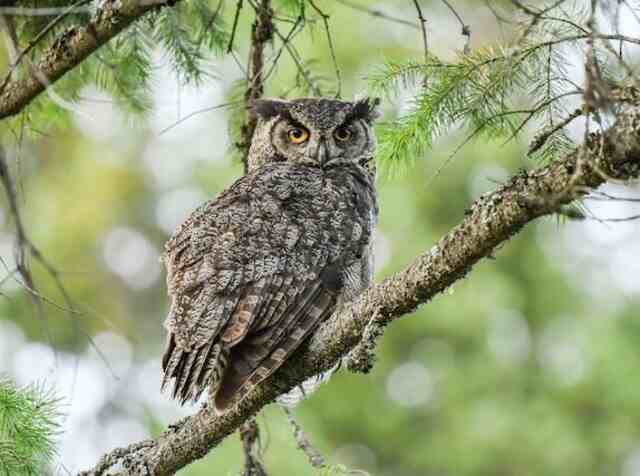
Do Owls Have Teeth?
Owls are fascinating birds of prey that have captured the attention of people for centuries. Among the many things people wonder about owls is whether they have teeth or not.
This question has both a simple and complex answer. While owls don’t have teeth in the traditional sense, they do have structures in their beaks that serve a similar purpose.
Explanation of Owl Beaks
An owl’s beak is one of its most important features, used for everything from hunting and feeding to grooming and defense.
The beak is made up of two parts – the upper mandible and lower mandible – which are hinged together at the base.
Unlike other birds, owls’ beaks are not curved downwards, but rather straight or slightly curved upwards.
Comparison Between Owl Beaks and Teeth
While owls don’t have teeth like mammals do, their beaks serve a similar purpose. In fact, an owl’s beak can be thought of as a set of modified teeth that are adapted for catching and holding onto prey.
The edges of an owl’s upper mandible are serrated like the cutting edge of a knife, allowing it to tear apart its food with ease. Compared to mammalian teeth, an owl’s beak has several advantages.
For one thing, it is much lighter than a set of heavy teeth would be, allowing the bird to fly more easily. Additionally, because the edges self-sharpen as an owl eats, there is no need for periodic dental maintenance like there would be with traditional teeth.
The Function of an Owl’s Beak
An owl’s beak serves multiple functions beyond just catching and eating prey. For example, it is used for preening and grooming feathers, as well as for defending against potential predators or threats.
Overall, the beak is a crucial component of an owl’s anatomy that is uniquely adapted to meet the bird’s specialized needs. While it may not be exactly like teeth in other animals, it serves a similar purpose and is just as important for helping owls survive in their environment.
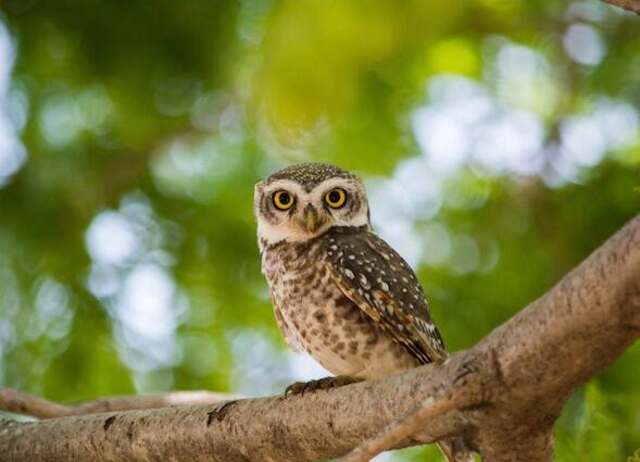
The Mystery Behind Owls’ Teeth
Historical Beliefs About Owls’ Teeth
For centuries, there has been an ongoing debate about whether or not owls have teeth. Many ancient cultures believed that owls had teeth, and this belief was fueled by their unique facial structure.
The flat, wide face of an owl gives it a distinct appearance that can be unsettling to some people. This facial structure has led to many myths about owls having sharp teeth that they use to attack their prey.
One of the most common beliefs about owls is that they use their teeth to rip apart their prey before swallowing it whole.
This belief is often perpetuated in popular culture, with images of cartoon owls tearing apart mice with razor-sharp teeth. However, this belief is simply not true – owls do not have teeth.
The Truth Behind the Myth
So if owls do not have any teeth, how do they eat? The answer lies in their beaks.
An owl’s beak is perfectly adapted for its hunting style and diet. Instead of sharp teeth, an owl’s beak is curved and hooked at the end, allowing it to tear through flesh and bone with ease.
The lack of teeth may seem like a disadvantage for an animal that preys on other animals, but it is actually one of the adaptations that make them successful hunters.
Their beaks are strong enough to crush small bones and swallow them whole without any risk of choking or injury.
Owls With Specialized Beaks
While most species of owl have similar shaped beaks adapted for hunting prey on land or in trees; some species have specialized beaks adapted for specific prey items such as fish or insects.
For example, the fish owl has a particularly sharp and curved bill compared to other owls which allows it to catch and eat fish.
Similarly, the elf owl has a smaller bill and is adapted to prey on insects. While the mystery behind the myth of owls having teeth has persisted for centuries, it is now clear that owls do not have teeth.
Instead, they have a perfectly adapted beak that allows them to hunt and eat their prey with ease. The variety of specialized beaks found in different owl species only adds to the incredible adaptability of these fascinating creatures.

The Role of Beak in Owl’s Diet
Owls are known for their incredible hunting abilities, which are largely attributed to their unique beaks. Unlike other birds, owls have hooked beaks that help them catch and kill prey.
The shape and size of an owl’s beak is determined by the type of prey it hunts. Larger owls with strong beaks hunt larger prey such as rabbits or rodents, while smaller owls with slimmer beaks hunt smaller prey like insects and small mammals.
Types of Prey that Owls Eat
Owls are carnivorous predators, which means they feed exclusively on flesh. They hunt a wide variety of prey including mice, rats, rabbits, snakes, squirrels, bats, fish, and insects. Some species of owl even hunt other birds!
Owls have a unique digestive system that allows them to consume their prey whole or in large chunks. They then regurgitate the parts that cannot be digested such as fur and bones in the form of pellets.
How an Owl’s Beak Helps it Hunt and Eat Prey
An owl’s beak plays an important role in helping it hunt for food. The hooked shape allows the bird to grip onto its prey tightly without letting go until it has been killed.
Additionally, an owl’s beak is designed to tear through flesh easily, allowing the bird to consume its food quickly and efficiently. Furthermore, the sharp edges on an owl’s beak also help it clean its feathers by removing any parasites or debris.
An owl’s diet is diverse but mainly consists of small animals such as rodents or insects depending on their species size, while hunting with a specialized hooked-shaped beak which helps them catch their prey more effectively than any teeth could do so.
Owls’ unique adaptations make them efficient hunters in their ecosystems making them one of nature’s most fascinating creatures.
Owl Adaptations for Hunting Without Teeth
Adaptations that allow them to hunt without teeth
Despite not having teeth, owls have developed several adaptations that enable them to efficiently hunt and consume their prey. One of the primary adaptations is their razor-sharp talons. These talons are capable of grasping and holding onto prey firmly, preventing it from escaping.
Owls’ wings have also evolved to become silent during flight so that they can approach prey without being heard. This feature enables owls to swoop down on unsuspecting prey without it noticing.
Another adaptation is their incredible eyesight. Owls have large eyes that are capable of detecting even the slightest movements in low light conditions, thanks to a layer of cells called rods behind their retinas which increases sensitivity at low light levels.
Explanation on how their digestive system works
Owls’ digestive systems have also evolved for hunting without teeth. Once an owl captures its prey, the food passes through its beak into its crop – a thin walled sac-like structure located at the base of the owl’s neck – where it is stored temporarily before moving on into the stomach.
The food is then broken down by stomach acids aided by sharp bones in their stomachs that help grind up tough parts like fur and bones before passing through a short intestine where nutrients are absorbed before passing onto the cloaca.
Interestingly, owls regurgitate “pellets” after digesting a meal, which contain undigested parts such as fur or bones that could not be dissolved in stomach acid.
These pellets serve as important resources for ecological studies, since researchers can analyze them to identify what types of prey an owl eats and compare this data with other populations.
Overall, despite not having teeth, owls are highly specialized hunters with several key adaptations that enable them to capture and consume prey efficiently while also playing an important ecological role in their ecosystems.

Summary of the Article
Throughout this article, we have explored the question of whether or not owls have teeth. We have learned that while owls do not technically have teeth, they do have beaks that serve a similar purpose in their diets.
We’ve also discussed the anatomy of owls, including their physical characteristics and adaptations for hunting without teeth. Additionally, we’ve debunked some common misconceptions about owls’ teeth and examined the historical beliefs surrounding them.
By taking a closer look at these fascinating creatures, we gain a better understanding of their unique biology and adaptations.
Owls are incredibly skilled predators with specialized beaks that allow them to catch and consume prey with ease. As we continue to learn more about their anatomy and behaviors, we can also appreciate how they fit into the larger ecosystem as well.
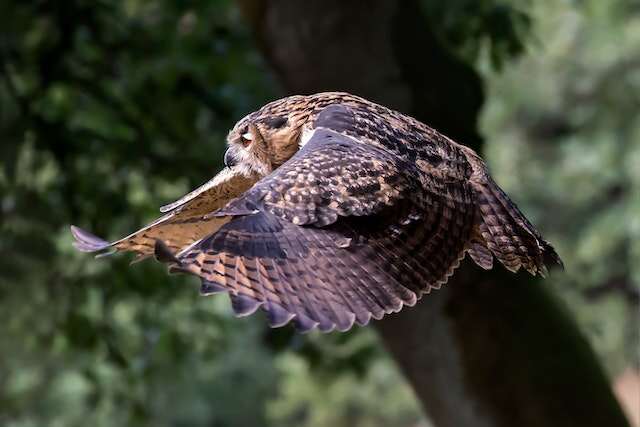
The Importance of Knowing About Animal Anatomy and Adaptations
It’s crucial to understand the anatomy and adaptations of animals for several reasons. First and foremost, it allows us to appreciate these creatures on a deeper level.
By gaining knowledge about owl anatomy, for example, we can better understand how they survive in their natural habitats and interact with other species around them.
Additionally, understanding animal anatomy can help us identify how certain species are affected by environmental changes or human activity.
For example, by studying owl populations in areas where deforestation is occurring or pesticides are used heavily can give us insight into how these factors impact wildlife.
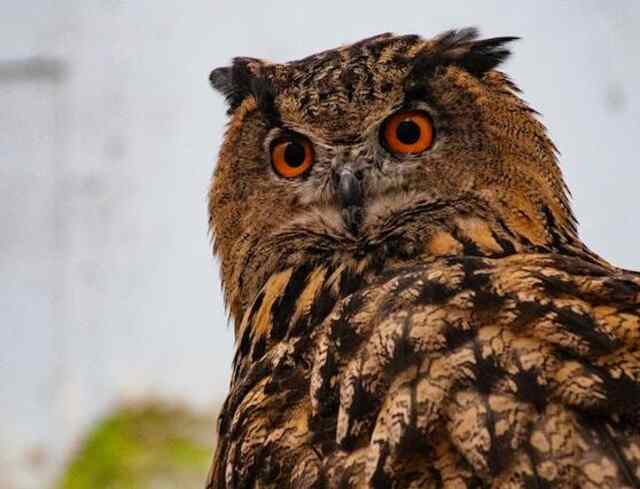
Why We Should Appreciate Owls More
Owls are remarkable creatures that play an essential role in maintaining natural ecosystems around the world. They are skilled hunters who help control populations of rodents and other small prey species that could otherwise cause imbalances within ecosystems.
Furthermore, owls possess unique adaptations that allow them to thrive in various environments — from Arctic tundras to tropical rainforests — making them truly incredible creatures.
By learning more about their behavior and biology, we can develop a greater appreciation for their role in the world around us.
While owls may not have teeth in the traditional sense, they are fascinating creatures with incredible adaptations that help them thrive.
By gaining knowledge about their anatomy and behaviors, we can better appreciate these animals and work to protect them for future generations to enjoy.

FAQs: Do Owls Have Teeth?
Do owls have teeth?
No, not all owls have teeth. Some species of owls, such as the Barn Owl, do not have any teeth at all. While some owl species have small, sharp structures called tomia in their beaks that aid in gripping and tearing prey, these are not considered teeth in the same sense as those found in mammals.
What do owl teeth look like?
Owl teeth are small and pointed and are called tomia. They are not located in the front of their mouth, but rather towards the back of their beak.
What are owl teeth used for?
Owl teeth are used for gripping and tearing prey, and for breaking up and swallowing small bones and other tough material that they ingest along with their food.
Do Owls Bite?
Owls are capable of biting if they feel threatened or are handling their prey. Owls have powerful beaks and sharp talons that they use for hunting and defense. When cornered or threatened, they may bite as a form of self-defense.
Therefore, it is important to exercise caution when handling or approaching owls to avoid getting bitten, as their bites can cause serious injuries.
Conclusion
In conclusion, while some owl species have small, sharp structures called tomia in their beaks that aid in gripping and tearing prey, these are not considered teeth in the same sense as those found in humans or other mammals. Some species of owls, such as the Barn Owl, do not have any teeth at all.
It is important to note that owls are still capable of powerful bites, and it is recommended to exercise caution when handling or approaching them.

